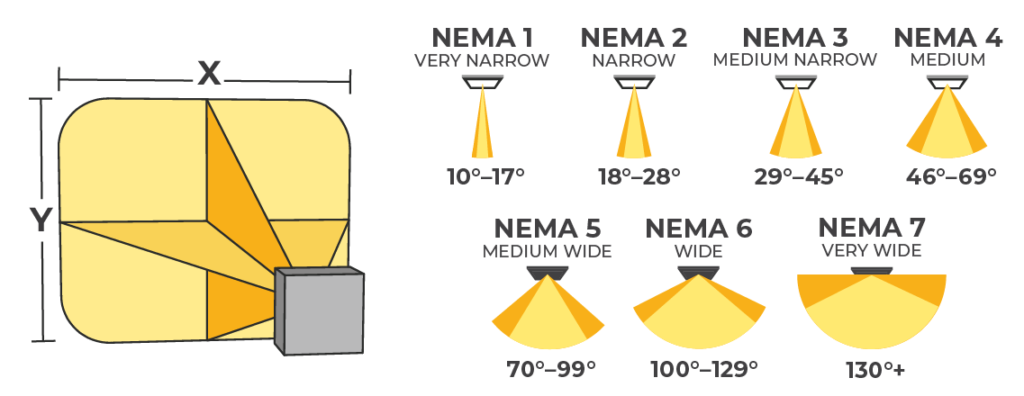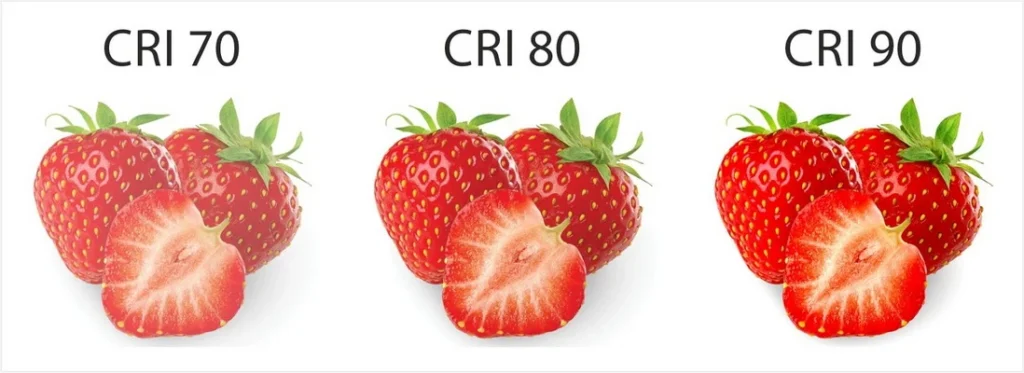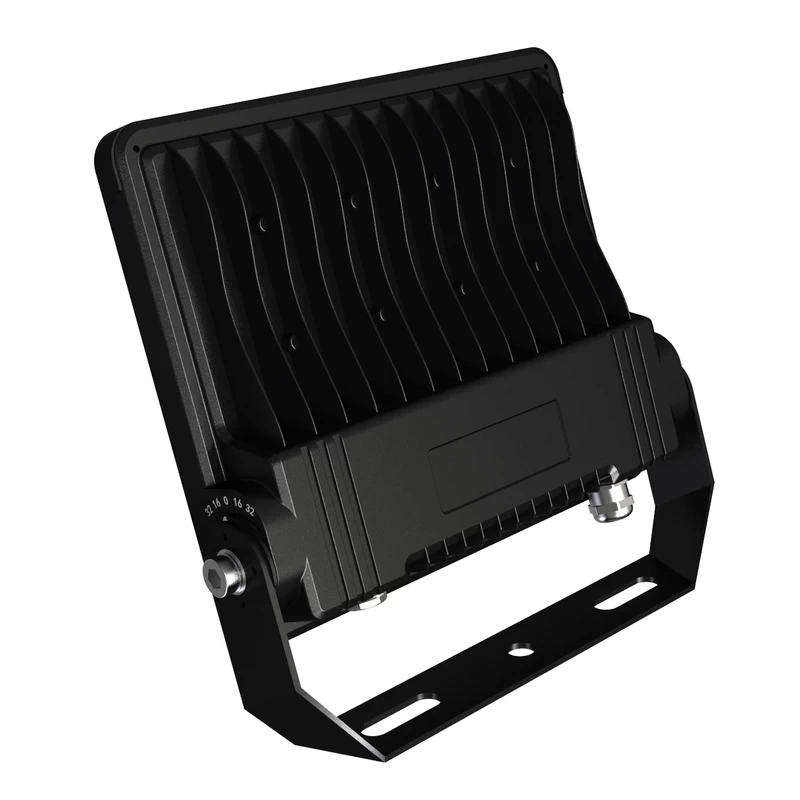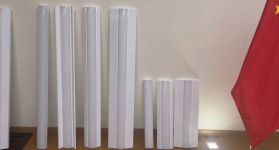Inhaltsübersicht
Umschalten auf1. Einleitung
Flutlicht liefert eine breite, gleichmäßige Ausleuchtung großer Flächen. Mit Ausstrahlungswinkeln von bis zu 180° eignet es sich für verschiedene Anforderungen im Außenbereich. Doch bei der Vielzahl der verfügbaren Optionen kann es schwierig sein, das richtige Modell zu finden. Dieser Leitfaden hilft Ihnen bei der Auswahl des besten Flutlichts für den Außenbereich, basierend auf den wichtigsten technischen Daten und realen Szenarien.

2. Einkaufsführer
Helligkeit und Lichtstrom (Lumen - lm):
Wichtigkeit: Bestimmt direkt die Reichweite und Intensität der Beleuchtung. Die Wattzahl (W) gibt nur den Stromverbrauch an, während der Lichtstrom (lm) der wahre Indikator für die Helligkeit von LED-Flutlicht im Freien ist.
Vorschläge zur Auswahl:
- Beleuchtung kleiner Flächen (Innenhof, Veranda): 1000 - 3000 lm
- Mittlere Fläche (einzelner Lampenmast auf einem Parkplatz, Basketballplatz): 5000 - 15000 lm
- Große Fläche (Fußballplatz, Industriegebiet): > 20000 lm (erfordert in der Regel eine Kombination aus mehreren Lampen)

Abstrahlwinkel:
Wichtigkeit: Bestimmt die Form und den Bereich der Lichtabdeckung. Je größer der Winkel, desto breiter die Abdeckung, aber desto geringer die zentrale Helligkeit; je kleiner der Winkel, desto konzentrierter das Licht.
Vorschläge zur Auswahl:
- Gleichmäßige Beleuchtung großer Flächen (Plätze, Höfe): Wählen Sie einen breiten Abstrahlwinkel (90° - 120° oder größer).
- Akzentbeleuchtung im mittleren Entfernungsbereich (Gebäudefassaden, Parkplätze): Wählen Sie einen mittleren Abstrahlwinkel (60° - 90°).
- Fernprojektion (Stadien, Hochmastleuchten, Flughäfen): Wählen Sie einen engen Abstrahlwinkel (15° - 30°).

Farbtemperatur - Kelvin - K:
Wichtigkeit: Beeinflusst die visuelle Wahrnehmung und die Umgebungsatmosphäre.
Gemeinsame Reichweite:
- Warmweißes Licht (2700K - 3000K): Warm und angenehm, geeignet für Wohnhöfe und Hotellandschaften.
- Neutralweißes Licht (4000K - 4500K): Natürliches und klares Licht, das am häufigsten auf Parkplätzen, Straßen und Sportplätzen verwendet wird (unter Berücksichtigung von Erkennbarkeit und Komfort).
- Kaltweißes Licht (5000K - 6500K): Hell und scharf, geeignet für Industriebereiche, die hohe Aufmerksamkeit erfordern, große Sportveranstaltungen und Sicherheitsüberwachungsbereiche. Hinweis: Kaltweißes Licht kann das Gefühl der Lichtverschmutzung verstärken.

Farbwiedergabe-Index (CRI):
Wichtigkeit: Gibt die Fähigkeit einer Lichtquelle an, die wahre Farbe eines Objekts wiederzugeben. Je höher der CRI (maximal 100), desto realistischer ist die Farbe.
Vorschläge zur Auswahl:
- Sicherheitsüberwachung, Parkplatz: ≥ 70 (Nummernschilder, Gesichter und Objektfarben müssen eindeutig identifiziert werden).
- Stadien, kommerzielle Flutlichtanlagen für den Außenbereich: ≥ 80 (um genaue Farben von Sportlern und Produkten zu gewährleisten).
- Hochwertige Landschaftsbeleuchtung: ≥ 90** (stellt die wahren Farben von Pflanzen und Baumaterialien wieder her).

Schutz gegen Eindringen - IP-Bewertung:
Wichtigkeit: Schlüsselindikator für Staub- und Wasserbeständigkeit. Außenleuchten müssen eine hohe IP-Bewertung haben. Alle unsere Flutlichter sind wasserdicht Outdoor-LED-Flutlichter.
Interpretation: "IPXX" (die erste Ziffer steht für staubdicht, die zweite Ziffer für wasserdicht).
Empfohlene/raue Umgebungen:
- Mindestanforderung: IP65 (vollständig staubdicht und geschützt gegen Niederdruckwasserstrahlen).
- Starker Regen, küstennahe Salzsprühnebelgebiete: IP66 (geschützt gegen starkes Strahlwasser) / IP67 (geschützt gegen kurzzeitiges Untertauchen).
- Staubige Baustellen, Sandsturmgebiete: die erste Ziffer ist ≥6.
- Unterwasser oder Langzeit-Sprühwasser: IP68 (Wassertiefe und -dauer müssen angegeben werden).
Material und Wärmeableitung:
Material des Gehäuses: Aluminiumdruckguss ist die beste Wahl (gute Wärmeableitung, hohe Festigkeit, Korrosionsbeständigkeit). Vermeiden Sie billigen Kunststoff.
Entwurf der Wärmeableitung: Kühlkörper mit Rippen sind der Hauptstrom. Schlechte Wärmeableitung ist der Hauptgrund für die verkürzte Lebensdauer von LED-Leuchten! Wir haben professionelle Hochtemperatur-Flutlicht.
Energieeffizienz und Lebenserwartung:
Lichtausbeute (lm/W): Je höher der Wert, desto energieeffizienter ist sie. Hochwertige LED-Flutlichter für den Außenbereich haben in der Regel eine Lichtausbeute von 100-150 lm/W oder mehr.
Nennlebensdauer: Wählen Sie eine Nennlebensdauer von ≥ 50.000 Stunden und basierend auf dem L70/B10-Standard (70% der Leuchten behalten nach 50.000 Stunden mehr als 70% Helligkeit). Hinweis: Hohe Temperaturen verkürzen die Lebensdauer erheblich.
Dimmen und intelligente Steuerung:
Dimmfunktion: Unterstützt sie 0-10V/DALI/PWM/Thyristor-Dimmverfahren? Ist es notwendig, Outdoor-Flutlicht Leuchten Bewegungssensor dimmbar zu bieten.
Intelligente Steuerung: Ist es notwendig, Sensoren (menschlicher Körper, Lichtempfindlichkeit), Zeitschaltuhren oder intelligente Systeme anzuschließen?
3. Die wichtigsten Punkte für den Kauf im Freien führte Flutlicht (Beispiele)
| Anwendungsszenario | Grundlegende Anforderungen | Empfohlene Specs | Besondere Hinweise |
|---|---|---|---|
| Umgebungen mit hohen Temperaturen (Wüsten, Fabriken, Dächer) |
Wärmeableitung, Hochtemperaturbeständigkeit |
Material: Hochwertiger Aluminium-Druckguss + große Kühlkörperlamellen Treiber: Hochtemperatur-Elektrolytkondensatoren (>105°C) Leistungsreduzierung: Wählen Sie eine höhere Wattzahl als berechnet |
Geschlossene Räume meiden Kühlkörper regelmäßig von Staub befreien Großer Arbeitstemperaturbereich (-40°C ~ +60°C+) |
| Sportliche Beleuchtung (Fußball-/Basketball-/Tennisplätze) |
Hohe Helligkeit, Gleichmäßigkeit, Blendungsbegrenzung, hoher CRI |
Helligkeit: Sehr hoch (erfordert professionelle Berechnung, Multi-Light-Setup) Abstrahlwinkel: Eng bis mittel Gleichmäßigkeit: Hoher U0-Wert CRI: >80 (idealerweise >90) CCT: 4000K-5000K Blendfrei: Tiefer Reflektor oder Gitterdesign |
Muss den einschlägigen Normen für Sportbeleuchtung entsprechen Professionelle Montagehöhe und -winkel Erwägen Sie eine sendefähige Beleuchtung für im Fernsehen übertragene Veranstaltungen. |
| Parkplätze (offen oder mehrstöckig) |
Sicherheit, Gleichmäßigkeit, Energieeinsparung, lange Lebensdauer |
Helligkeit: Mäßig und gleichmäßig (Blendung vermeiden) CRI: ≥70 (Nummernschild und Gesichtsklarheit) CCT: 4000K-5000K Schutzart: IP65/IP66 Steuerungen: Bewegungsmelder und Tageslichtsensor dringend empfohlen |
Gleichmäßiges Layout zur Vermeidung dunkler Zonen Einstellen der Masthöhe und des Abstands Einfache Wartung (insbesondere bei niedrigen Decken) |
| Architektonische Flutlichtbeleuchtung (Fassaden / Landschaften) |
Farbwiedergabe, Strahlensteuerung, Ästhetik |
CRI: ≥85 (idealerweise >90) Abstrahlwinkel: Je nach Gebäudegröße (schmal/mittel) Dimmen: Unterstützung für Ambientesteuerung CCT: Basierend auf dem architektonischen Stil |
Präzise Strahlsteuerung zur Vermeidung von Streulicht Verdeckung der Halterung sicherstellen Zusammenarbeit mit Architekten oder Lichtplanern |
| Industrie / Lager | Hohe Helligkeit, Haltbarkeit, Stoßfestigkeit, einfache Wartung |
Helligkeit: Hoch Material/Schutzart: Robustes Metallgehäuse + IP65/IP66 + IK08+/IK10 Lichtausbeute: Hoch (energiesparend) |
Risiko eines Zusammenstoßes mit einem Gabelstapler Höhere Staubbelastung erfordert bessere Abdichtung Kann eine explosionssichere Zulassung erfordern (gefährliche Zonen) |
| Garten / Hof | Ambiente, Sicherheit, sanfte Beleuchtung |
Helligkeit: Mäßig CCT: 2700K-3000K (warm) CRI: Hoch (stellt Pflanzenfarben wieder her) Steuerungen: Lichtschranke + Bewegungsmelder empfehlen |
Vermeidung von Überbeleuchtungen und Lichtverschmutzung Wählen Sie Einrichtungsgegenstände, die zum Stil der Landschaft passen Mindestens IP65 für Wasserdichtigkeit |
4. Wesentliche Punkte der Installation und Wartung
Installationsmethode:
Wandmontage: Am häufigsten, achten Sie auf die Tragfähigkeit der Wand und die Festigkeit der Dehnschrauben.
Mastmontage (Lichtmast/Hochmast): Die Höhe und der Winkel müssen genau berechnet werden, um eine gleichmäßige Abdeckung ohne dunkle Bereiche zu gewährleisten. Große Outdoor-LED-Flutlicht erfordern professionelle Installation!
Eingebettet/unterirdisch: Für die Wand- oder Wegbeleuchtung, mit extrem hohen Anforderungen an die Wasserdichtigkeit (IP67/IP68).
Winkeleinstellung: Wählen Sie Leuchten mit verstellbaren Halterungen, um ein präzises Anvisieren des Zielbereichs zu ermöglichen.

Elektrische Sicherheit:
Vergewissern Sie sich, dass die Spannung der Stromversorgung mit der Leuchte übereinstimmt.
Verwenden Sie eine wasserdichte Abzweigdose und eine Kabelverschraubung (PG-Kopf).
Streng geerdet! Vermeiden Sie das Risiko von Leckagen.
Beachten Sie die örtlichen Elektrovorschriften und lassen Sie die Installation vorzugsweise von einem zugelassenen Elektriker durchführen.
Wartungsfreundlichkeit:
Modularer Aufbau: Das Lichtquellenmodul und die Treiberstromversorgung können unabhängig voneinander ausgetauscht werden, was die Wartungskosten und -schwierigkeiten erheblich reduziert.
Leicht zu öffnende Struktur: Bequem zu reinigen die Linse, Heizkörper und internen Staub.
Werkzeuglose Demontage: Verbessern Sie die Effizienz der Wartung.
Unterstützung durch den Lieferanten: Wählen Sie eine Marke, die eine zuverlässige Garantie (in der Regel 5 Jahre) und Ersatzteilversorgung bietet.
5. Schlussfolgerung
In der Tat gibt es kein bestes Flutlicht für den Außenbereich. Nur derjenige, der am besten zu Ihren Bedürfnissen passt, ist der beste. Andernfalls kann das beste Flutlicht für den Fußballplatz nicht in einer bestimmten Umgebung mit hohen Temperaturen verwendet werden.
Egal, ob es sich um eine Umgebung mit hohen Temperaturen oder um eine feuchte und staubige Umgebung handelt. Von engem Abstrahlwinkel bis zu breitem Abstrahlwinkel, von niedriger Leistung bis zu ultrahoher Leistung. Unsere Outdoor-LED-Flutlicht kann Ihre Bedürfnisse zu erfüllen. Sie können unsere komplettes Sortiment an Flutlichtanlagenoder nehmen Sie Kontakt mit uns auf, um eine perfekte Lösung für Sie zu entwickeln.
Identifizieren Sie die Kernszene und das Umfeld:
Ist es für den Hof oder den Garten? Für hohe Temperaturen oder für das Meer?
Bestimmen Sie die wichtigsten Parameter:
Stellen Sie Helligkeit, Abstrahlwinkel, Farbtemperatur, CRI, IP und IK gemäß der Szenentabelle ein.
Strenge Kontrolle der Qualität:
Marke und Zertifizierung: Wählen Sie eine professionelle Beleuchtungsmarke und prüfen Sie, ob das Unternehmen und das Produkt über die entsprechenden Sicherheitszertifikate verfügen.
Material und Wärmeableitung: Aluminium-Druckguss-Gehäuse + gute Wärmeableitung Design ist die Basis.
Stromversorgung des Treibers: Die Lebensdauer der Lampe hängt oft von der Qualität des Netzteils ab. Wählen Sie einen bekannten Markentreiber.
Denken Sie an Intelligenz und Kontrolle:
Erkennung, Dimmung und Zeitsteuerung können das Erlebnis und den Energiespareffekt erheblich verbessern.
Bewerten Sie die Gesamtbetriebskosten:
Achten Sie nicht nur auf den Anschaffungspreis! Berücksichtigen Sie die Stromrechnung, die Kosten für den Austausch der Glühbirne/des Netzteils und die Arbeitskosten für die Wartung. Das beste Flutlicht für den Außenbereich mit hoher Lichtausbeute, langer Lebensdauer und einfacher Wartung ist auf lange Sicht kostengünstiger.
Installation und Kundendienst:
Vergewissern Sie sich, dass der Installationsplan durchführbar ist, und bestätigen Sie die Garantie und die Reaktionsfähigkeit des Lieferanten nach dem Verkauf.
6. Die Menschen fragen auch
Kann ich das LED-Flutlicht für den Außenbereich durch eine normale LED-Leuchte ersetzen?
Dringend nicht empfohlen! Gewöhnliche LED-Leuchten werden im Freien schnell kaputt gehen (Wassereintritt/Kurzschluss/Lichtverfall) und sogar Sicherheitsrisiken verursachen. Sie müssen professionelle wasserdichte LED-Flutlichter für den Außenbereich wählen. Und gewöhnliche LED-Leuchten haben nicht die Lichtwirkung von LED-Flutlichtern für den Außenbereich.
Verbrauchen Ihre LED-Flutlichter viel Strom?
Im Vergleich zu herkömmlichen Lampen spart sie erheblich Energie, aber die Leistungsauswahl muss vernünftig sein. Die Lichtausbeute der LED beträgt 150 Lumen/Watt und ist damit energiesparender als die von Natriumdampflampen (etwa 100 Lumen/Watt) und Halogenlampen (etwa 20 Lumen/Watt).
Wie weit reicht ein 200W LED-Flutlicht?
Die Bestrahlungsentfernung hängt vom Abstrahlwinkel ab, nicht von der Leistung allein!
200W engstrahlendes Licht (30°) beleuchtet das Spielfeld: der Fußball ist aus 50 Metern Entfernung sichtbar
200W breitstrahlendes Licht (120°) beleuchtet den Parkplatz: deckt 4 Parkplätze ab (ca. 15 Meter x 15 Meter)
Wie weit leuchten 20.000 LED-Flutlicht-Lumen?
Die Lumen bestimmen die Gesamthelligkeit, und die Bestrahlungsentfernung wird immer noch von der optischen Konstruktion (Abstrahlwinkel) bestimmt!
Enger Lichtkegel (20°): konzentrierter Lichtpunkt, maximale Reichweite 60 Meter + (z. B. Beleuchtung der Eckfahne eines Fußballfeldes)
Breiter Lichtstrahl (120°): Lichtstreuung, effektive Entfernung nur 10-15 Meter (z.B. quadratische Bodenbeleuchtung)
Zum Beispiel:
- Wenn Sie das Stadion in 30 m Entfernung beleuchten müssen, wählen Sie 20000 Lumen und einen engen Lichtkegel (30°)
- Bedarf für 100㎡ Lagerfläche: **20000 Lumen + breiter Lichtkegel (120°) + Installationshöhe 6-8 Meter










